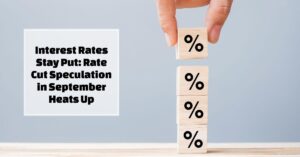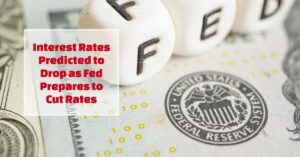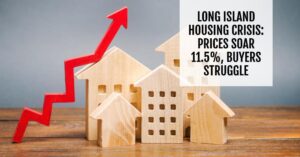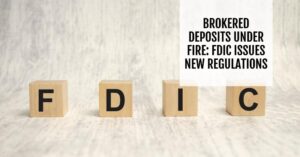Is the American Dream of Homeownership Fading? The housing market in 2024 is a rollercoaster of emotions. Soaring mortgage rates, a dwindling inventory, and shifting buyer preferences have created a perfect storm. But July offered a glimmer of hope. Let's dive into the latest housing market trends and see if this could be the beginning of a turnaround.
Overview of Current Housing Market Trends
Increased Inventory Reflects Changing Dynamics
The latest data made available by Realtor.com shows that the housing market is experiencing a surge in inventory, with active listings rising by 36.6% compared to the previous year. This increase marks the ninth consecutive month of growth and is the highest level of inventory observed since the pandemic.
| Metric | Year-Over-Year Change |
|---|---|
| Active Listings | +36.6% |
| Total Unsold Homes | +22.6% |
| Newly Listed Homes | +3.6% |
| Median Days on Market | +10.0% (50 days) |
| Price-Reduced Listings | +3.4 pp (18.9%) |
Analysis of Inventory Trends
The increased inventory is notably driven by enhanced activity from home sellers. Despite a year-over-year rise in newly listed homes, the momentum is less than the previous month’s surge of 6.3%. This gradual shift may indicate sellers’ cautious approach in a market characterized by rising mortgage rates and changing buyer expectations.
Importantly, while homes actively for sale have seen notable gains, total inventory remains below pre-pandemic levels, suggesting a complex recovery trajectory. Current data shows that inventory is still 30.6% lower than the averages seen between 2017 and 2019.
Stabilizing Prices With Regional Variations
Interestingly, while the overall median listing price remained stable at $439,950, the median price per square foot increased by 3.1%. This discrepancy highlights a growing inventory of smaller, more affordable homes. It indicates the market's response to buyers seeking value amidst rising costs.
Regional Price Variations:
| Region | Median Listing Price Year-Over-Year | Median Price Per Sq. Ft. Year-Over-Year |
|---|---|---|
| Midwest | +1.8% | +3.8% |
| Northeast | +4.4% | +6.1% |
| South | -0.3% | +2.3% |
| West | +0.2% | +4.1% |
The Northeast leads in price appreciation, with a 4.4% increase in median listing price year-over-year, while the South faces a slight decline. This highlights the regional disparities in the housing market and reflects localized economic factors affecting real estate dynamics.
Time on Market: A Shift Towards Longer Wait Times
July 2024 saw homes spending an average of 50 days on the market, a notable increase compared to previous years. This shift presents a striking contrast to the fast-paced sales environment experienced in prior years. Such extended time frames can be attributed to buyers exercising caution in their purchasing decisions as economic uncertainties loom.
Breakdown of Days on Market by Region
| Region | Median Days on Market (July 2024) | Year-Over-Year Change |
|---|---|---|
| Midwest | 0 days | 0 |
| Northeast | -1 day | -1 |
| South | +6 days | +6 |
| West | +2 days | +2 |
Homes in the South are lingering the longest, with a 6-day increase in the time spent on the market, reflecting a shift towards more cautious buyer behavior. However, it is worth noting that even with these increases, the average days on market are still below levels seen prior to the pandemic.
Understanding Buyer Sentiment and Economic Indicators
Mortgage Rates and Consumer Confidence
July's declining mortgage rates, which reached their lowest since March, have sparked renewed interest among home buyers. However, many are still hesitant, opting to wait for potential further decreases. This sentiment is reflected in a 1.8% increase in homes under contract, although the growth has begun to slow.
The expectations around interest rates have a significant impact on market dynamics. As potential buyers remain uncertain, it may lead to a more patient approach towards home purchases. The outlook for the next several months appears geared towards stabilization, with the Federal Reserve anticipated to announce rate cuts as early as September 2024.
Price Reductions: A Growing Trend
An alarming trend is the rise in homes with price reductions, which climbed to 18.9% of listings, marking the highest level in two years. This shift suggests that many sellers are reassessing their price expectations in response to current market conditions.
| Year | Percentage of Listings with Price Cuts |
|---|---|
| 2023 | 15.5% |
| 2024 | 18.9% |
Regional Insights on Price Cuts
The substantial increases in price reductions across various regions are indicative of seller adjustments.
| Region | Price-Reduced Share Year-Over-Year Change |
|---|---|
| South | +4.1 pp |
| West | +3.4 pp |
| Midwest | +2.4 pp |
| Northeast | +1.4 pp |
Regions like Tampa have experienced considerable increases in price reduction rates, alongside Charlotte and Phoenix. This trend signals a shift in market strategy as sellers react to reduced competition and prolonged selling periods.
Anticipating Future Trends
Looking ahead, the housing market appears set for a complex yet intriguing trajectory. As mortgage rates stabilize and inventory rises, both buyers and sellers will need to recalibrate their expectations and strategies.
Key takeaways:
- Increased Inventory: Despite growth, inventory remains lower than pre-pandemic levels.
- Stabilizing Prices: While overall prices remain stable, regional variations must be monitored closely.
- Extended Days on Market: Homes are taking longer to sell, indicating a cautious marketplace.
- Price Adjustments: A rising share of listings with price cuts reflects a necessary recalibration among sellers.
As we move deeper into 2024, understanding these housing market trends will be crucial for participants at all levels. Whether you’re a buyer, seller, or investor, staying informed on these developments will enable better decision-making in an evolving real estate landscape.
Frequently Asked Questions (FAQs)
1. What are the primary factors driving the current housing market trends in 2024?
The current housing market trends are being driven by several factors, including an increase in inventory due to more sellers entering the market, fluctuating mortgage rates that have recently dipped, and changing buyer preferences. Economic uncertainties and varying regional conditions also play significant roles in shaping market dynamics.
2. How has the inventory of homes for sale changed compared to previous years?
As of July 2024, the inventory of homes for sale has increased by 36.6% year-over-year, marking nine consecutive months of growth. Notably, this is the highest level of active listings seen since the pandemic, although it still falls 30.6% short of pre-pandemic inventory levels observed between 2017 and 2019.
3. Why are homes spending more time on the market in 2024?
Homes are now spending an average of 50 days on the market, reflecting a growing trend of cautious buyer behavior. This increased duration is attributed to economic uncertainties, rising mortgage rates, and a readjustment of sellers' price expectations. It marks a departure from the quick sales typical of previous years.
4. Are home prices expected to continue stabilizing in the coming months?
While median home prices have remained stable at $439,950, the median price per square foot has seen a modest increase of 3.1%. This trend could continue as the market adapts to increased inventory and changing buyer demands. However, regional variations may impact price trends differently across various markets.
5. What does the increase in price reductions indicate for sellers in 2024?
The rise in price reductions, now at 18.9% of listings, suggests that many sellers are adjusting their price expectations in response to a slowing market. This trend indicates that sellers may need to be more flexible with their pricing strategies to attract potential buyers amidst growing competition and longer selling periods.
6. How can buyers and sellers navigate the current housing market effectively?
Both buyers and sellers should stay informed about market conditions and trends. Buyers should consider their financing options carefully, especially in light of fluctuating mortgage rates, and be prepared to act when suitable properties become available. Sellers, on the other hand, should set realistic pricing strategies and be open to negotiations to ensure successful sales in a competitive environment.
7. What regions are seeing the most significant changes in the housing market?
Regions like the South and West are experiencing notable increases in inventory growth, with active listings rising by 47.6% and 35.4%, respectively. Conversely, the Northeast and Midwest are seeing slower inventory growth. Prices and selling conditions can vary widely within these regions, making localized research essential for buyers and sellers.
8. How can one stay updated on housing market trends?
Staying updated can be achieved by following credible real estate news sources, subscribing to market reports, and utilizing data analytics from reputable organizations and real estate platforms. Networking with local real estate agents can also provide valuable insights tailored to specific communities or regions.
ALSO READ:
- Housing Market Predictions for the Next 2 Years
- Housing Market Predictions for Next 5 Years (2024-2028)
- Housing Market Predictions 2024: Will Real Estate Crash?
- Housing Market Predictions: 8 of Next 10 Years Poised for Gains
- Don't Panic Sell: Here's What Current Housing Market Trends Predict
- 2024 Housing Market vs. 2008 Crash: Key Differences
- Economist Predicts Stock Market Crash Worse Than 2008 Crisis
- How Much Did Housing Prices Drop in 2008?










